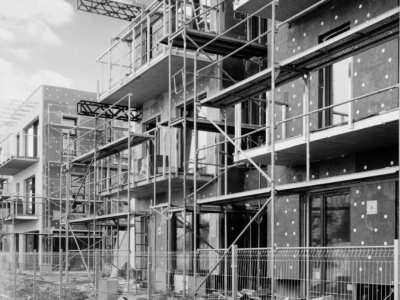One of the key problems facing the UK housing market can be boiled down to: lots of demand and not enough supply.
This blockage, despite the Government’s best efforts to shift it, continues unabated.
Instead of being cleared up, its effects are spreading to the rental market, as homeownership levels fall, creating an increase in renters and a steady rise in property prices.
If things didn’t seem bad enough for the sector, COVID-19 caused a new problem for the housing market.
The pandemic’s effect on our work and home lives has caused a noticeable deluge of residents looking to move from cities to the suburbs, more space being their primary motivator.
Another big pull is the fact that extra rooms to work in and the option of a garden are well within the rental budget for many when you look beyond the limits of big cities.
A viable option to help with demand
Build to rent is a new option being seen as a practical way to satisfy the market’s newfound desire to live in the suburbs.
Build to rent is a distinct class within the private rented sector and consists of exactly what its name implies: building new homes specifically for renters, not buyers.
This focused development means that homes are being built to head off some of the biggest issues renters face, and it is quickly emerging as a solution to the housing crisis and suburban-based tenant demand.
In the past year, my team have witnessed this shift in renter behaviour first-hand.
We have seen a surge of tenants keen to swap smaller city accommodation for larger suburban homes and this desire to make the switch hasn’t tailed off in line with lockdowns ending.
Build to rent has led to rapid growth in the number of planning permissions submitted, an increase of 52% during the pandemic year.
My prediction is that this will continue to soar.
Why is build to rent becoming so popular?
The increase in submitted planning permissions is due to how attractive this class of property is for developers.
Firstly, as a business they benefit from being able to create cost-efficient homes on a large scale. Secondly, the dynamic community-based living it encourages has made many local planning authorities more amenable to granting development permission.
On the other side of the fence, there are a slew of benefits for renters as well.
Most importantly is cost – build to rent developers are constructing high quality housing on mass and this allows them to work out economies of scale with suppliers and keep rent affordable.
Tenants are then able to afford properties that are greener, more high tech, and sustainable in specification.
This is in stark contrast to older rental properties that have been kitted out to the same spec by private landlords, who would understandably try to recoup this investment by charging more in rent.
Money is a huge motivator but there are other key benefits for tenants choosing buy to rent, such as longer leases that make laying roots in an area easier and a community feel to developments that is perfect for families.
The future of build to rent
With developers, tenants, and local authorities all standing to gain from build to rent, it is easy to see why it will expand exponentially over the next few years.
But where will it go from there? My prediction is that take-up will further balloon due to increased regulations pushing private landlords out of the market.
I also think that the community aspect will get a further boost from on-site liaisons who will do everything to ensure the smooth running of local properties – an invaluable convenience for busy households.
The foundations of build to rent are going from strength to strength due to all parties involved in their construction, occupancy, and approval standing to gain from their development.
Despite lockdowns seeming like a distant memory, the need for suburban housing is ever present and it is for this reason that homebuilders need get involved at the ground level for sating this demand.
The past 18 months have seen large scale change and uncertainty in the industry. It is now more important than ever that we are ready, not reactionary, to market changes.
























Comments